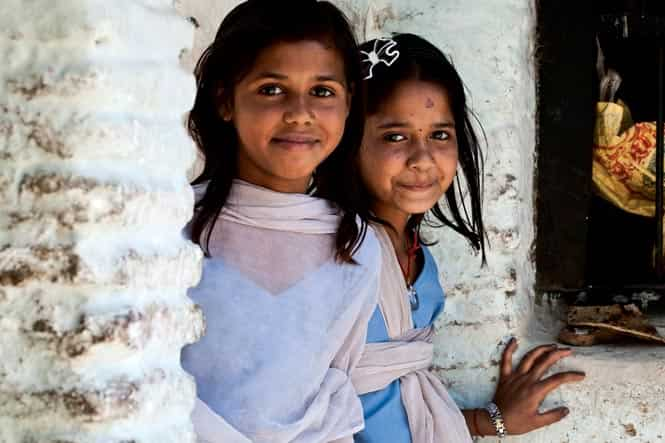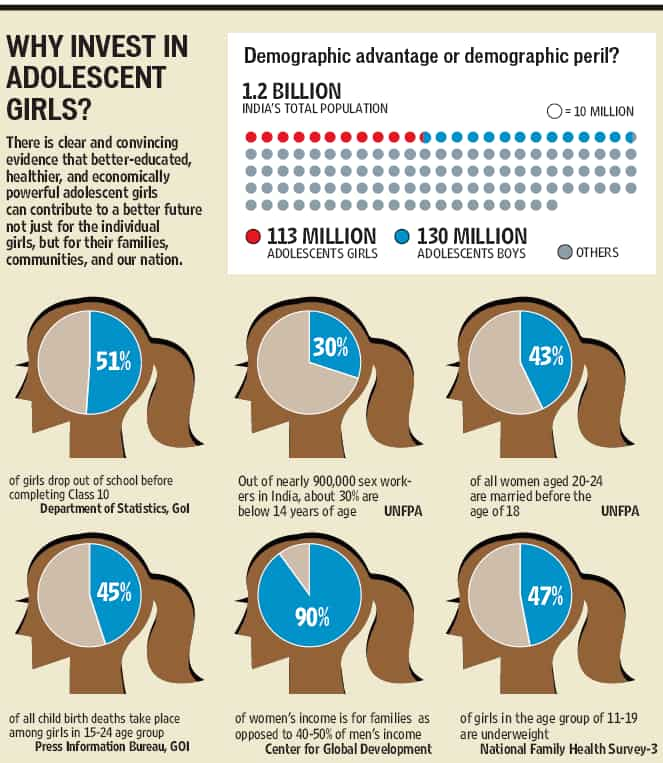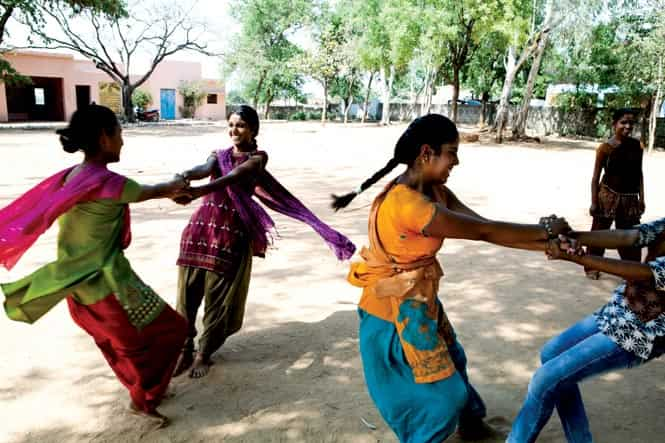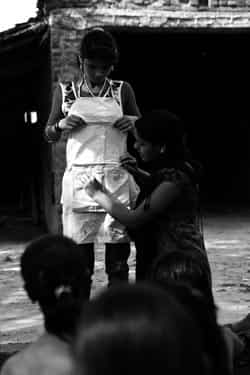Girls are essential agents of change in breaking poverty and deprivation cycle
There are 113 million adolescent girls in India, accounting for nearly 11% of the population. But a large chunk of this segment never realises its potential because of socio-economic barriers. KumKum Dasgupta writes.
Renu Singh is a sprightly 13-year-old girl. She is the youngest of her three siblings, loves watching Hindi movies and wearing nail paints and devouring ice lollies.
But these days she has hardly any time to indulge in these activities because six days a week, come rain or shine, the diminutive adolescent travels five km from her home in a decrepit illegal colony in Ghaziabad to work as a domestic help in an upmarket apartment complex in Noida.
“I never went to school because my parents did not think it was important. I have to earn money for my future,” she told HT, matter of fact. When it came to deciding the trajectory of his children’s lives, Renu’s father, a 46-year-old tailor, decided to invest in his two sons and sent them to a local school.
But Renu and her sister, Swati, were asked to “secure their future”; in other words, they were sent out to work as domestic helps to earn money for their wedding. “It may happen soon….my mother has seen a boy for me,” said Renu sadly, as she flipped through her brother’s science book.
Renu’s story is hardly out of the ordinary.
READ: 2014 DASRA GIRL POWER AWARDS

There are 113 million adolescent girls (10-19 years)in India, accounting for nearly 11% of the population. But they are a largely invisible population.
Dominant behaviours and mindsets about adolescent girls are universal across India and are manifested in key aspects of their lives – gender-based discrimination, early marriage and pregnancy, lack of education and a dearth of formal employment.
However, girls are essential agents of change in breaking the cycle of poverty and deprivation. By investing in the economic potential of girls like Renu and Swati through education, life skill training, and by delaying child marriage, multiple issues such as maternal mortality, child survival, gender-based violence and HIV can be resolved and the cycle of poverty can be broken.

Focusing on girls translates into better futures for women, children and families, thereby creating intergenerational impact.
“After spending 14 years scaling and supporting non-governmental organisations and social business, guiding nearly $40 million to the development sector, I am convinced that the best investment for any funder is to support the empowerment of 113 million adolescent girls,” said Deval Sanghavi, Partner and Co-Founder, Dasra.

There are plenty of studies that show healthy women and children contribute to economic growth. According to the Partnership for Maternal, Newborn and Child Health, hosted at the World Health Organization in Geneva, every dollar spent on key interventions for reproductive, maternal, newborn and child health, empowering adolescent girls (by giving them the opportunity to stay in school, delay marriage and child birth), adds $110 billion to the economy in the lifetimes.

Fortunately, the world is beginning to understand the importance of this segment: In Africa, the Girl Effect Movement includes girls in education, health, and economic investment to ensure that the continent has a better chance to prevent issues such as child marriage, teen pregnancy and breaking the inter-generational poverty cycle.
The Indian government too has acknowledged the importance of this group and on January 7, the National Health Mission launched the Rashtriya Kishore Swasthya Karyakram, signalling the significance of investing in adolescents.
This is for the first time that the government has launched a comprehensive scheme on adolescent girls that looks beyond clinical interventions and focuses on health and wellbeing across six parameters: sexual and reproductive health, nutrition, substance abuse, mental health, non-communicable diseases, gender based violence.
READ MORE: 2014 DASRA GIRL POWER AWARDS





